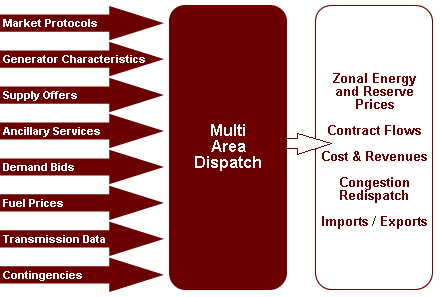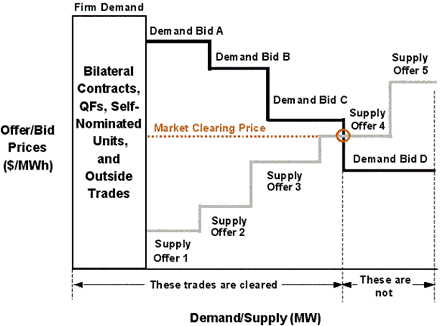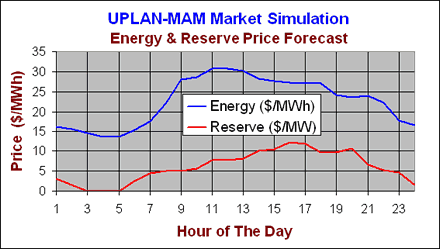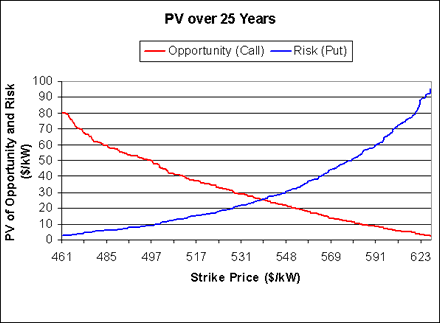|
UPLAN Multi-area Model (MAM)
The Electricity Competition Analysis and Marketing System

The UPLAN Multi-area Model (UPLAN-MAM) is specifically developed for users who are searching for an easy-to-use, yet powerful model. Some users want to have a simpler version of UPLAN-NPM, and if necessary, to migrate to a more sophisticated NPM version of the model later. UPLAN-MAM uses the same algorithm as the UPLAN-NPM for unit commitment and multi-area dispatch, but has multiple transmission zones rather than an AC or DC load flow. Its functionality for the unit commitment is based on energy and reserves, both spinning and non-spinning. All modules of UPLAN-NPM, except for the AC power flow and the ancillary services model, are interchangeable with those of UPLAN-MAM.
UPLAN-MAM Capabilities
UPLAN is an integrated model for analysis of regional generation, demand, transmission and power markets. The model simulates the electricity energy and ancillary service markets and transmission operations simultaneously on an hourly basis. The major components of UPLAN and their output are cited below.
A. Unit Commitment Model
The first step in simulating the operation of an electrical system requires committing distributed generation and transmission resources across the grid to meet the customer loads. This finds equilibrium between supply and demand of energy and reserves. This method minimizes total capacity costs taking into consideration start-up costs, ramp rates and spinning and non-spinning requirements.

It produces:
- Zonal prices for unlimited zones
- Buyer and seller market clearing prices for each zone
- Reserve prices including:
- Spinning reserve
- Non-spinning reserve by designated availability (10 minute, 30 minute, etc.) - Prices for capacity (ICAP)
- Zonal Flow (Imports and exports)
- Revenue earned by each generator for providing the services

B. Multi-area Dispatch Model
For dispatch, the ideal method is to use integrated generation and transmission dispatch with a transportation solution. This provides estimates of regional imports, exports and redispatch costs for congestion management. It provides:
- Zonal energy flow between zones
- Re-dispatch and congestion management charges
- Hourly energy, cost and revenue of each generator
- Generator operation such as outages, constrained on and off costs and startup shut-down costs
- Zonal electricity imports and exports
- The values of FTRs, TCC, and inter-zonal congestion rents
C. Summary of Major Components of UPLAN-MAM
For multi-area simulation, we need to perform unit commitments taking into account loads, resources, unit characteristics, ramp rates, start-up cost, and no load costs. Dispatch is done optimizing the total cost of producing energy across multiple areas. This requires an optimization of exports and imports incorporating flow gate constraints. In contemporary multi-area models, units have to be redispatched if the zonal constraint are violated. The duals of these variables provide an estimate of the value of FTRs, TCCs and basis risk analysis.
The Merchant Plant Model (MPA) is for longer-term modeling of new entrants, retirements, and market evolution over time. This module can be shared both by UPLAN-NPM and UPLAN-MAM. Electricity prices are significantly influenced by the structure of the electricity market as it evolves over time. In a truly competitive environment, energy marketers will offer new products, new participants will find it attractive to participate in the market, and new financial instruments will become available for risk management. Algorithms for Merchant Plant models necessarily employ non-linear optimization techniques. We use a Nonlinear Dynamic Search (NLS) algorithm that incorporates a grid simulation model for valuing the revenues earned by potential new entrants, and determines the economic viability by incorporating all the incomes from all the energy and ancillary service markets as well as earnings from options such as capacities and locational basis differential. The results of MPA are listed below.
- Location, size, and timing of new merchant plants
- Choice of technology for each of the entrants
- Revenues of the new entrants from energy and reserves
- Revenues of the new entrants from any reliability payments
- Assessment of volatility and earnings from calls, puts and other derivatives
- Trade-off between generation and transmission investment
- Retirement of existing plants
Maintenance Scheduling Model (MSM) is for determining the competitive scheduling of generators over time to maximize market returns and to stabilize reliability. MSM implements loss of load probability (LOLP), marginal cost and reserve margin methods that accounts for the following principal considerations for planned outages: planned outage requirement for each generating unit, seasonal demand profile, elapsed time since the last planned outage for each unit, generating unit size, and the impact on system reliability of the maintenance schedule. The optimized or most economical schedule for maintenance for the selected generating units is reported including:
- Unit by unit maintenance duration
- Start date
- Completion date
- Generates up to four periods of schedules per year
This module can be shared both by UPLAN-NPM and UPLAN-MAM.
In-line Hydro Scheduling Model (HSM) for managing reservoirs, scheduling discharge in the long term and in-line scheduling of daily and hourly dispatch to maximize market profits. The built-in hydro-scheduler is unparalleled in the industry for its ability to use the detailed representation of the multiple watersheds to capture the optimal operating policy of hydro assets in competitive markets. The optimization maximizes the overall generator profits from serving the demand for electric energy with the available hydro and thermal generating resources, while respecting all the hydrological, thermal, zonal flow and demand constraints of the overall system. The scheduler simultaneously evaluates each of the hydro plants as an energy provider as well as an ancillary services provider. The results represent the seamless integration of output data into the detailed reporting capability of the UPLAN model suite. They include:
- Plant capacity in MW
- Water Flow
- Reservoir Levels
- Reserve Revenues for Regulation and Spinning Reserves
Both UPLAN-NPM and UPLAN-MAM versions use this module.
The Volatility Model is for capturing the effect of fundamental variables on market volatility. The first step involves a systematic evaluation of the volatility associated with fundamental drivers, such as fuel prices, hydrological conditions, electricity demand, new generators and other critical variables. This is followed by a determination of the probability distribution of these variables and their qualitative correlation. An ideal model will sample from the probability distribution of the critical variables to generate Monte Carlo scenarios that are used for simulating the electricity market. These distributions are essential for evaluating options and developing hedging and risk management strategies. The volatility simulation provides the following important outputs.
- Energy prices and their distribution
- Distribution of Reserve prices
- Distribution of costs and revenues of generators
- Future prices of electricity and their option prices at various strike prices
- Price forecast for standard contracts including options
- Derivatives such as Collars, Straddles, Floors, Ceiling and Exotic options

In UPLAN, all the components work together as a single model under a unified environment using a common database. What distinguishes UPLAN-MAM from UPLAN-NPM is that it does not have full-fledged forward market model for multiple commodities and transmission network.
|
